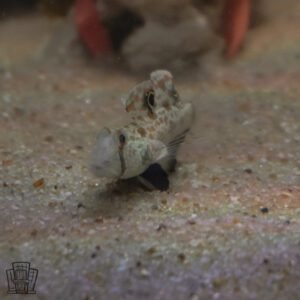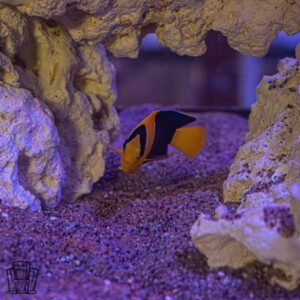Description
-
- Scientific Name: Centropyge woodheadi
- Common Names: Woodhead’s Angelfish, Blackfin Angelfish, Woodhead’s Pygmy Angelfish
- Maximum Length: 4 inches (10 cm)
- Minimum Aquarium Size: 55 gallons (208 liters) for a single fish; 75 gallons (284 liters) or larger for a pair to accommodate their territorial nature and need for hiding spots.
- Foods and Feeding Habits: Omnivorous, feeding on algae, small invertebrates, and sponges in the wild. In aquariums, offer algae-based flakes or pellets with spirulina, supplemented with frozen mysis shrimp or brine shrimp. Feed small amounts 2-3 times daily. Algae-covered live rock supports natural grazing.
- Reef Safety: Reef-safe with caution; they may nip at soft corals, large-polyp stony corals, or clam mantles if underfed. A varied diet minimizes risks in reef tanks.
- Temperament: Semi-aggressive, particularly toward other dwarf angelfish or similar species. Best kept singly or in pairs introduced simultaneously.
- Description: Woodhead’s Angelfish brings a vibrant glow to marine tanks with its distinctive look. Its body is bright yellow with a prominent black stripe on the upper rear dorsal fin and subtle blue accents on the fins. Native to the Southwestern Pacific, from the Great Barrier Reef to the Gambier Archipelago, they inhabit coral-rich reefs at depths of 10-50 meters. Their shy yet curious nature makes them a favorite for aquarists who can meet their dietary and territorial needs with ample live rock for cover.
Fun Facts:
- Named after underwater photographer Phil Woodhead, who alerted researchers to its unique black dorsal stripe in the Coral Sea, distinguishing it from similar angelfish.
- They can produce a subtle “thumping” sound during territorial displays, a low-frequency signal that carries through water to ward off rivals.
- In the wild, they often hover near branching corals, using their bright coloration to blend into sunlit reef patches while foraging.





